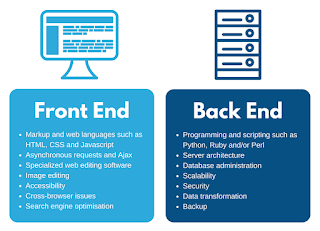The updated, final copy of this can be found on Dusty World here: https://temkblog.blogspot.com/2019/03/class-caps-are-low-resolution-solution.html originally published, Mar 24, 2019
I’m going to do what I do best and annoy everyone by not agreeing with anyone. I’m so perverse, sometimes what I don’t necessarily believe what I write, but if it serves to push my thinking, then I leave it in. Come down the rabbit hole with me to the magic land of Ontario Education where everything and nothing is data driven and very little of it makes sense… unless you’re a politician.
***
I’m just spitballing here, but after reading dozens of articles on the impending loggerheads between Fordnation and every public school teachers’ union in Ontario over class size caps, I thought it might be a good idea to think outside the box seeing as no one else is willing to.
Education minister Lisa Thompson seems to be getting deeper and deeper into the doublespeak as she tries to justify increasing class sizes for high school students by over twenty percent, offering up such nuggets as, it’ll make them tougher and more resilient, or, students can teach each other. If we don’t dehumanize our kids in school, how are they ever going to make it in the world of work isn’t a great selling point when justifying this approach to parents.
On the other side the hyperbole is coming on song with teachers and unions talking about how class caps are what saves students, but as someone who has been working in a classroom in Ontario since 2004 (and not in a union office or support role out of the classroom), I’m here to tell you that caps don’t work very well at all. All this noise about them in the media means we’re going to claim this as the hill we die on as Fordnation gleefully turns up the heat until we’re locked out or on strike. These violent delights will have violent ends, but I sincerely hope the people and organizations involved are looking for a solution rather than a fight.
I don’t see any of this as a winnable scenario. If the unions somehow find a way to win, all we get is the same inflexible and stratified system we currently have that produces a lot of people supporting already overfilled classrooms. If we lose we get that system made worse.
The idea of a cap of 22 means that we’re funded at that level. For every 22 students in the system, we get money from the Ministry to run a class. Funding at that level means we have lots of people in support roles at school, board and ministry levels. For every one of those people not teaching, we have a classroom with over 22 students in it to justify their existence. I’d love to see the data on the number of teachers we have in the system that aren’t teaching, but that sort of thing doesn’t get out. When they say we’ll have classes of 35 or 40 if the cap is raised to 28, they’re talking about how we currently have classes capped at 31 with an average cap of 22. Lots of people in the general public haven’t wrapped their heads around this, but they should. Bigger classes don’t help students or teachers, and we already have them.
What’s strange is that any talk of raising the caps doesn’t seem to impact the people in supporting roles and just trickles down directly to classroom teachers who are already over the average to support those jobs. There are many people who do those supporting roles exceedingly well, but there are also a number who are doing them because they don’t like teaching in a classroom and are looking for an out. Still others are doing jobs that require nothing teacher related, but are still getting paid as a teacher. If you’re doing health and safety or shuffling paper in an office, I’d suggest you should be getting paid accordingly, and not as a teacher. If we reviewed all those seconded teacher jobs and actually paid them inline with what the job was, there would be many more teachers in the system who, you know, teach.
As far as teachers in supporting roles go, those roles should be have expectations at least as stringent as the work a classroom teacher has if we’re expecting a teacher to do it. If a support role is being used diligently (and by diligently I mean with the same rigour that your classroom teacher works while preparing hours of instruction and then delivering it in a live, dynamic and differentiated manner to 70+ students every day), then I’m all for it. I’ve met ‘teachers’ who haven’t taught a class in Ontario in over a decade. They’re often considered to be experts in teaching. Some of them appear in my classroom periodically and proceed to assess me on my ability to teach, something they themselves haven’t done in years, and didn’t do for very long when they did (I’ve had a bee in my bonnet about this since 2011).
There are other supporting roles that get calcified into a permanent job. This should never happen. Any seconded teacher should be treated like a short term contract with specific goals to be met and then they return to the classroom. Not only would this stop nepotism, but it would also mean more cross training and wider experiences as more people cycle through seconded opportunities. Instead of seeing the same old seconded crew at the board, it would be fresh faces all the time. Pushing that further, I’d like to see anyone involved in assessing teachers actually, um, teach. VPs and principals should dip a toe in the classroom every few years just to remember what the job is and help create a leaner, more teaching focused system. Class sizes drop even with a higher cap if more people in the system are teaching.
All of this would require flexibility in the system and a management team that is agile, forward thinking and adaptable. It’s totally doable. We have the talent, we just don’t have the culture. If changes are coming, knocking the stratified, hardened nature of support roles loose may not be a bad thing. The only reason teachers would be wary of this is because usually change is focused on cheap, not better, and usually any changes land hardest on the people on the front line.
I assume there are ever so smart people in the Ministry and boards across the province who have been seconded from teaching who should be doing this sort of thinking, but that’s ok, I’ll take my weekend to iron it out for you all so I can be back in the classroom next week doing what I do – ignore that link, and all of these, and these ones – all of those conferences I’ve presented at, or learning fairs I’ve attended in the summer, or additional qualifications I’ve done in the summer, or Ed-camps on weekends or competitions I’ve taken days away from my family for, that’s all volunteer work. What I get paid to do is teach students in class every day – all that extracurricular work is done on my own time for no pay, but I think that’s what being a professional means, doing extra work to ensure my effectiveness. Having never been paid to do the array of work I do beyond the classroom while still being in class, I can’t help but wonder about seconded teachers and what it is they do when it isn’t obviously apparent. It always should be, otherwise they should be teaching. For those of them that would do anything to not be teaching (and I’ve met a few), perhaps it’s time to find another industry to work in?
Here’s how we can fix this no-win mess in Ontario Education that our government and unions are walking us into:
The 28 cap is now a talking point for this government and they can’t back off it. The 22 cap is where our unions are going to hold the hill to the last of us. Getting rid of caps entirely isn’t going to happen, too many people have a stake in that thinking, so why not create a cap system that is actually reflective of student need in each classroom?
This government has surely realized by this point that throwing special needs students under the bus isn’t just mean spirited and hurtful, but also has terrible optics. They need a win with the special needs community, and class caps of 28 with no other changes to the system ain’t going to do it.
How about this: actually give Individual Education Plan (IEP) students with special needs some weight when it comes to the classes they’ll be in. This should be data driven and transparent. All students are considered a 1 in the low-res class cap system we have right now, but anyone who has taught a class knows that not all students = 1. Off hand, my IEPed students can range from a 1.1 (barely needing any more than non-IEPed students), to a student I have right now that I’d rate at 4+. Some IEPs suggest small supports that don’t ask too much of a teacher. Other IEPs make many demands on a teacher’s time and ability to support both that one student and everyone else in the room simultaneously. Don’t forget, every time an IEP demands extras, like one on one instruction and differentiated delivery of material, that’s an expectation that requires time spent away from everyone else both in class and in extra preparation time out of it. The current system does nothing to acknowledge or support that.
I have an open junior high school class at the moment which is hard capped at 27, but over half of the students in this class have IEPs, and in several cases they have exceptional needs beyond what I’m able to do in a class of 27. Using this weighted system of class capping based on where I think my time is spent in that class (I finish each period in there sweating and exhausted because I’m trying to be in four places at once), this class is the equivalent of 38.3 non-special needs students, which I think is about right. I’d be just as frazzled and wrung out trying to serve the learning needs of 38 non-special needs students in the same circumstance.
Had I 27 students with no special needs (IEP special needs are dictated by psychological analysis by professionals, these aren’t arbitrary decisions), then I think I could manage this class effectively and be everywhere a student needs me when they need me. If I take half of that class of 27, let’s say 14 of the most high needs students, one of whom is the most challenging student I’ve dealt with in the last ten years, the needs-adjusted cap equals 24.3 students. In that class, two more students with lighter special needs loads would bring it to the current cap of 27. I would find that class of say, 16 students just as difficult to manage and provide effective learning as I would the class of 27 non-special needs students.
We say students have special needs in Ontario Education and then ignore the workload that comes from it. If the PC government wants to place 28 cap average sized classes on us, this special needs weighting would go some way toward making that a viable possibility for the teachers actually working with those students in the classroom. In a strange way, smaller class caps would give a teacher a heads up on what’s coming. How I approach a smaller, high-needs class would be very different to how I approach a larger, non-special needs class. Differentiation of instruction to promote positive outcomes for everyone is the goal, isn’t it?
If done right, this system would automatically size streamed classes based on the learners in them. I teach open level classes so get the full gamut of learning needs all at once, and suffer that lack of resolution our vague system provides now. Academic, applied and essential classes have lower caps as student needs increase, but that wouldn’t be necessary if we had weighted students tied to their individual needs. Most essential classes are IEP heavy and would automatically get downsized to make them more effective (smaller class sizes work more effectively with high-needs students).
A weighted IEP system that acknowledges students with special needs would make a 28 cap tenable. Making teachers seconded from the system short term, contract specific and then getting them back to teaching would be another way to make a higher cap possible. For jobs that aren’t at all teaching based (health and safety, office work at the board), don’t pay them as teachers because they aren’t.
| Debt went up with all three parties at the helm – even during Mike Harris’s legendarily fiscally focused years. The liberals were doing well until the US dragged the world into a financial crisis orchestrated by private business. I’m OK with seeking efficiencies in Ontario education, but not at the expense of student achievement and not while the government is paying friends and voting themselves raises. Is fiscal balance a high urgency goal or not? |
Ontario has the highest sub-national debt load of any jurisdiction in the world. We pay billions in debt management every year. Creating a leaner education system focused on putting teachers in front of reasonable numbers of students would protect our excellent education reputation. Ensuring that everyone who is paid as a teacher directly impacts the classroom would be a good way to get sag out of the system while doing our part to make Ontario more economically sustainable. That leaner system would still be able to support those teachers in special education, student success and learning commons who enrich learning for all both with and without special needs (students can suddenly become special need because of changing circumstances, having experts in the school to assist with that is vital).
Our education system would need to be more fluid, flexible and less stratified than what we have now. That agile system would be focused on classroom resources first and foremost. In doing so we might be able to manage a higher cap while still retaining the excellence Ontario’s education system has become known for.
If we’re just looking for a fight, then that’s what this will turn into, but for the sake of our students and the already stretched teachers working in classrooms all over the province, I sincerely hope we’re looking for better and not to burn it down. Lockouts, strikes and impending doom aren’t doing anyone any good. If nothing else, consider this a search for better solutions to what I hope is a commonly shared goal: the best possible outcome for every student in our system.
SUGGESTION SUMMARY:
- weight IEPed students when calculating class caps so high needs students are able to find success in classes better suited for them. In classes with low IEP counts, higher numbers mean more students moving more efficiently through the system
- Destratisfy seconded teaching and make these jobs short term contracts that seldom have a teacher out of the classroom for more than a year. Set specific, high expectations for seconded teachers, encourage more teachers to cross train and experience secondment in a short term way (this would reduce burnout and improve the emotional intelligence of many classroom teachers)
- Don’t pay teachers doing non-teaching seconded jobs as if they are teachers (health and safety, office administration, etc). In some boards this is already the case, but not in all. No teacher should be driving up class average sizes doing a job that isn’t teaching related.
- Set high, specific expectations for support role teachers in schools. Make those supporting roles contract based and short term, so more teachers experience the role. This cross training would improve school communication and effectiveness.
- Encourage excellence in support roles by removing people who can’t or won’t demonstrate beyond expectation work in the role.
- Anyone who is looking to avoid teaching in a classroom at all costs should be assisted into another profession.
- Administration should keep a toe in the water and teach a class every few years.
- Instead of suggesting that increased caps are going to land on classrooms, look at rejigging the system to put more teachers in classrooms so increased caps don’t hurt us where the rubber hits the road.
- Board and Ministry jobs are constantly evolving and are team based as new people come and go through existing initiatives. This is the end of lifers in those jobs. If you’re an Ontario teacher you’ve taught in a classroom in the past three years.
from Blogger https://ift.tt/2OpQ4i3
via IFTTT



































